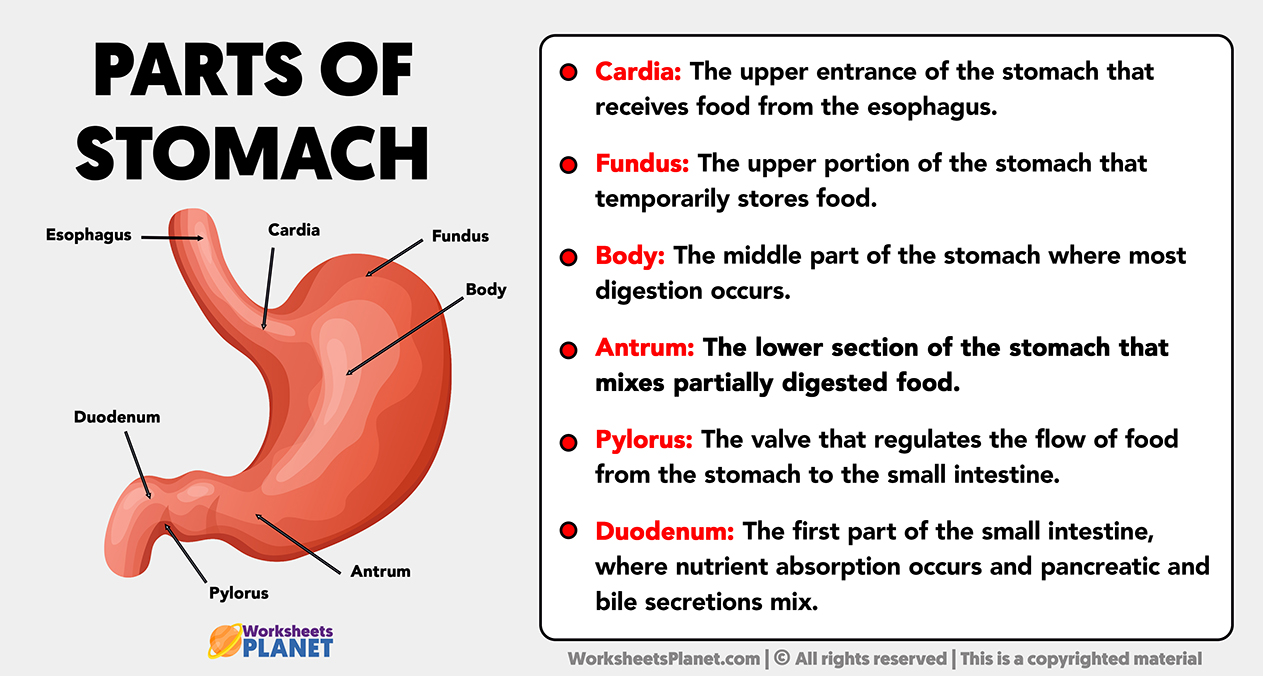The stomach is a muscular organ in the digestive system located between the esophagus and the small intestine. It stores and churns food, mixing it with gastric acid and digestive enzymes to facilitate further breakdown.
This process forms a semi-liquid substance called chyme. The stomach plays a key role in breaking down food into smaller particles for nutrient absorption in the digestive tract.

- Cardia: The upper entrance of the stomach that receives food from the esophagus.
- Fundus: The upper portion of the stomach that temporarily stores food.
- Body: The middle part of the stomach where most digestion occurs.
- Antrum: The lower section of the stomach that mixes partially digested food.
- Pylorus: The valve that regulates the flow of food from the stomach to the small intestine.
- Duodenum: The first part of the small intestine, where nutrient absorption occurs and pancreatic and bile secretions mix.

